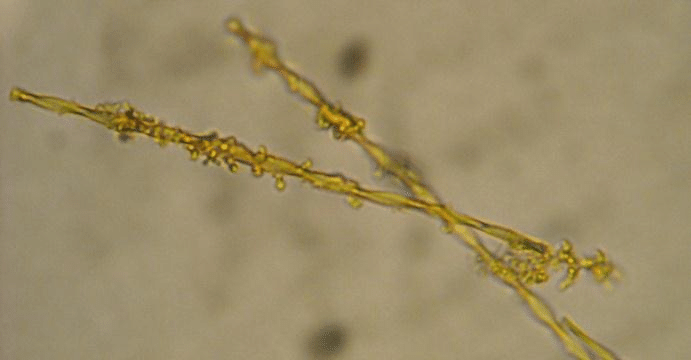Swimming Pool Iron Bacteria – The Orange Sludge!
Iron bacteria are commonly found in well water and can pose a health hazard in swimming pools. These bacteria are responsible for causing rust-colored stains on pool surfaces and a distinctive odor and taste. In this article, we will explore the association between iron-oxidizing bacteria and pools filled with well water, the types of bacteria involved, the health hazards to humans, and the best means of treatment for the well and the pool water.
They are a microorganism that uses iron as their energy source and is commonly found in areas with high levels of iron in the soil. The bacteria can
quickly colonize the pool surface, causing unsightly stains and unpleasant odors.
The most common iron-oxidizing bacteria in swimming pools are Gallionella and Siderocapsa. These bacteria produce a slimy biofilm on surfaces, a protective layer against chlorine and other disinfectants. As a result, these bacteria can be difficult to eliminate once they have become established in a pool.
TY – JOUR, AU – Bouchal, Tomáš, AU – Závada, Jaroslav, AU – Vojtková, Hana, AU – Langarová, Silvie, AU – Havelek, Radim, PY- 2012/12/01SP -N2 –

While the bacteria are not harmful to humans, they can create an environment conducive to the growth of other, more dangerous microorganisms. For example, the biofilm produced by these bacteria can harbor Legionella, a type of bacteria that causes Legionnaires’ disease, a severe form of pneumonia. Additionally, the rusty-colored stains caused by iron-oxidizing bacteria can indicate high iron levels in the water, leading to other health problems over time.
A similar article The Brain-Eating Amoeba
Suppose you are a pool service tech and suspect your customer’s pool is contaminated with iron-oxidizing bacteria. In that case, contacting a well water service company is essential to treat the well with permanganate. Permanganate is a powerful oxidizing agent that can eliminate iron-oxidizing bacteria and other types of bacteria and viruses. It is important to note that treating the well alone may not be sufficient to eliminate the problem. It is necessary to treat the pool water directly.

Keim, Carolina & Nalini Jr, Herminio & de Lena, Jorge. (2014). Manganese Oxide Biominerals from Freshwater Environments in Quadrilatero Ferrifero, Minas Gerais, Brazil. Geomicrobiology Journal. 32. 00-00. 10.1080/01490451.2014.978513.
Similar Article Water Microbiology | Wisconsin State Laboratory of Hygiene
The best means of treatment for pool water contaminated with iron-oxidizing bacteria is to shock the pool with a high chlorine concentration. This process, known as super chlorination, involves adding several times the usual amount of chlorine to the pool water to eliminate the bacteria. Scrubbing the pool surfaces may also be necessary to remove any formed biofilm.
Iron oxidizing bacteria can be a significant problem for pool owners, particularly those who fill their pools with well water. These bacteria can
cause unsightly stains and odors and create an environment conducive to the growth of other, more dangerous microorganisms. Suppose you suspect that your pool is contaminated with iron-oxidizing bacteria. In that case, contacting a well water service company is essential to treat the well with permanganate and to chlorinate the pool water super to eliminate the bacteria.






